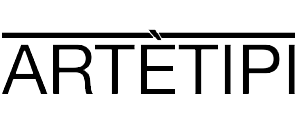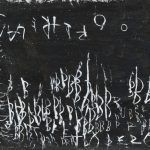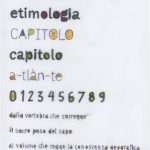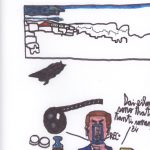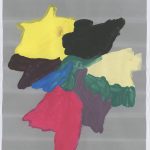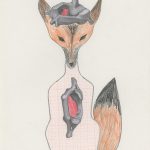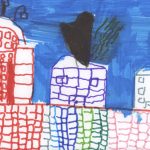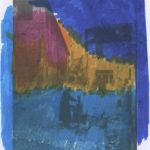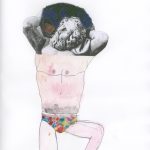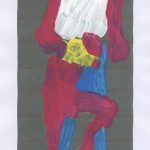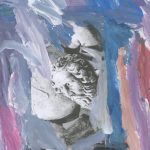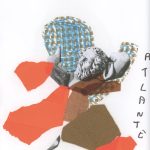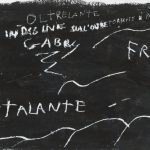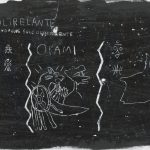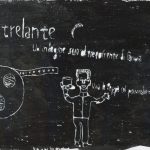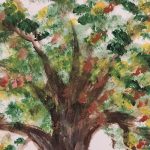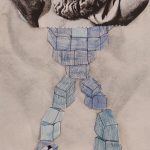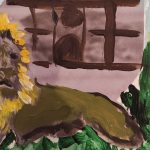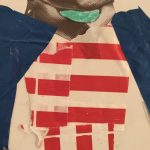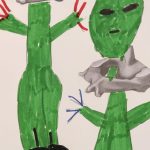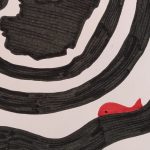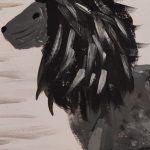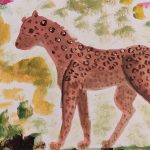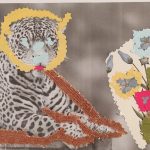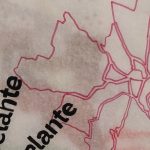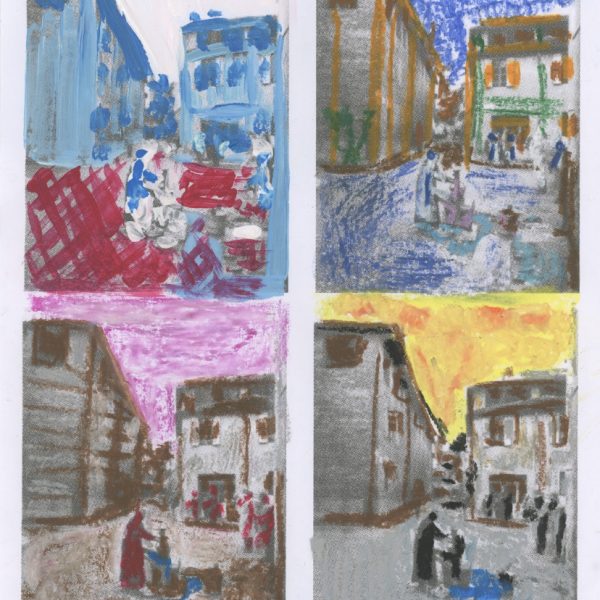
Oltrelante è un workshop di illustrazione e progettazione editoriale ideato e guidato da Alessia Tzimas, designer e illustratrice. Durante i laboratori sono stati eseguiti degli esercizi di illustrazione, si ha sperimentato con la narrazione e con le tecniche di stampa tradizionale, come la monotipia, la xilografia e l’incisione. In un secondo momento, l’attività si è incentrata sulla produzione e gestione di contenuti riproducibili in serie, elaborati grafici declinabili in progetti editoriali come cataloghi, brochure e libri, utilizzando strumenti analogici e software digitali.
Il risultato finale del laboratorio è stato concretizzato nella produzione di un atlante che indaga l’Oltretorrente di Parma. Esso non ha la pretesa di divulgare o informare riguardo un luogo: il libro non vuole avere una narrazione lineare ma restituire le visioni allegoriche degli artisti dell’atelier di Artètipi, i quali hanno partecipato attivamente alla creazione di immagini, collage, pitture che interpretano il presente ed il passato dei luoghi del quartiere.
Gli incontri si sono suddivisi in tematiche differenti. In un primo momento abbiamo fatto esercizi sui caratteri tipografici e sulle forme della mappa del quartiere. Nel secondo esercizio le artiste e gli artisti hanno reinterpretato elementi esistenti nel Parco Ducale nell’antichità.
Nel terzo esercizio il tema era la strada, il percorso che gli artisti fanno per arrivare in atelier. Nell’ultima parte del laboratorio abbiamo lavorato con vari dettagli architettonici e storici del quartiere. Via della Salute, il monumento dedicato a Filippo Corridoni e la reinterpretazione pittorica di personaggi storici come gli Arditi del Popolo. Abbiamo lavorato con il materiale dell’archivio fotografico messo a disposizione dall’Istituto storico della Resistenza e dell’Età Contemporanea di Parma, ISREC. Infine abbiamo lavorato organizzando una catalogazione della maggior parte delle vie situate nel quartiere. Il risultato grafico vuole essere un elogio dell’astrazione, partendo da elementi concreti attraverso linguaggi visivi diversi che comunicano tra loro. Quello del workshop è stato un percorso attivo e personale, dove il flusso creativo si spostava da un foglio all’altro, da una pagina all’altra, con pause, ripetizioni, ansie da prestazione, entusiasmo, noia e creatività. In queste pagine si ha voluto restituire il ritmo di questa esperienza fatta di foto d’archivio, immagini di elementi esistenti, statue, etimologie, miti, mappe, toponomastica ed elementi tipografici.
Oltrelante is an illustration and editorial design workshop conceived and led by Alessia Tzimas, designer and illustrator. During the workshops, illustration exercises were carried out, we experimented with narration and traditional printing techniques, such as monotype, woodcut and engraving. At a later stage, the activity focused on the production and management of mass-produced content, graphic designs that can be used in editorial projects such as catalogues, brochures and books, using analogue tools and digital software.
The final result of the laboratory was concretized in the production of an atlas that investigates the Oltretorrente of Parma. It does not claim to disclose or inform about a place: the book does not aim to have a linear narrative but to return the allegorical visions of the artists of the Artètipi atelier, who actively participated in the creation of images, collages and paintings that interpret the present and the past of the places in the neighborhood.
The meetings were divided into different themes. At first we did exercises on the typographical characters and shapes of the neighborhood map. In the second exercise the artists reinterpreted elements existing in the Parco Ducale in the old days.
In the third exercise the theme was the road, the path that artists take to get to the atelier. In the last part of the workshop we worked with various architectural and historical details of the neighborhood. Via della Salute, the monument dedicated to Filippo Corridoni and the pictorial reinterpretation of historical figures such as the Arditi del Popolo. We worked with material from the photographic archive made available by the Historical Institute of the Resistance and Contemporary Age of Parma, ISREC. Finally we worked by organizing a cataloging of most of the streets located in the neighborhood. The graphic result is intended to be a celebration of abstraction, starting from concrete elements through different visual languages that communicate with each other. The workshop was an active and personal journey, where the creative flow moved from one sheet of paper to another, from one page to another, with pauses, repetitions, performance anxiety, enthusiasm, boredom and creativity. In these pages we wanted to restore the rhythm of this experience made up of archive photos, images of existing elements, statues, etymologies, myths, maps, toponymy and typographical elements.
